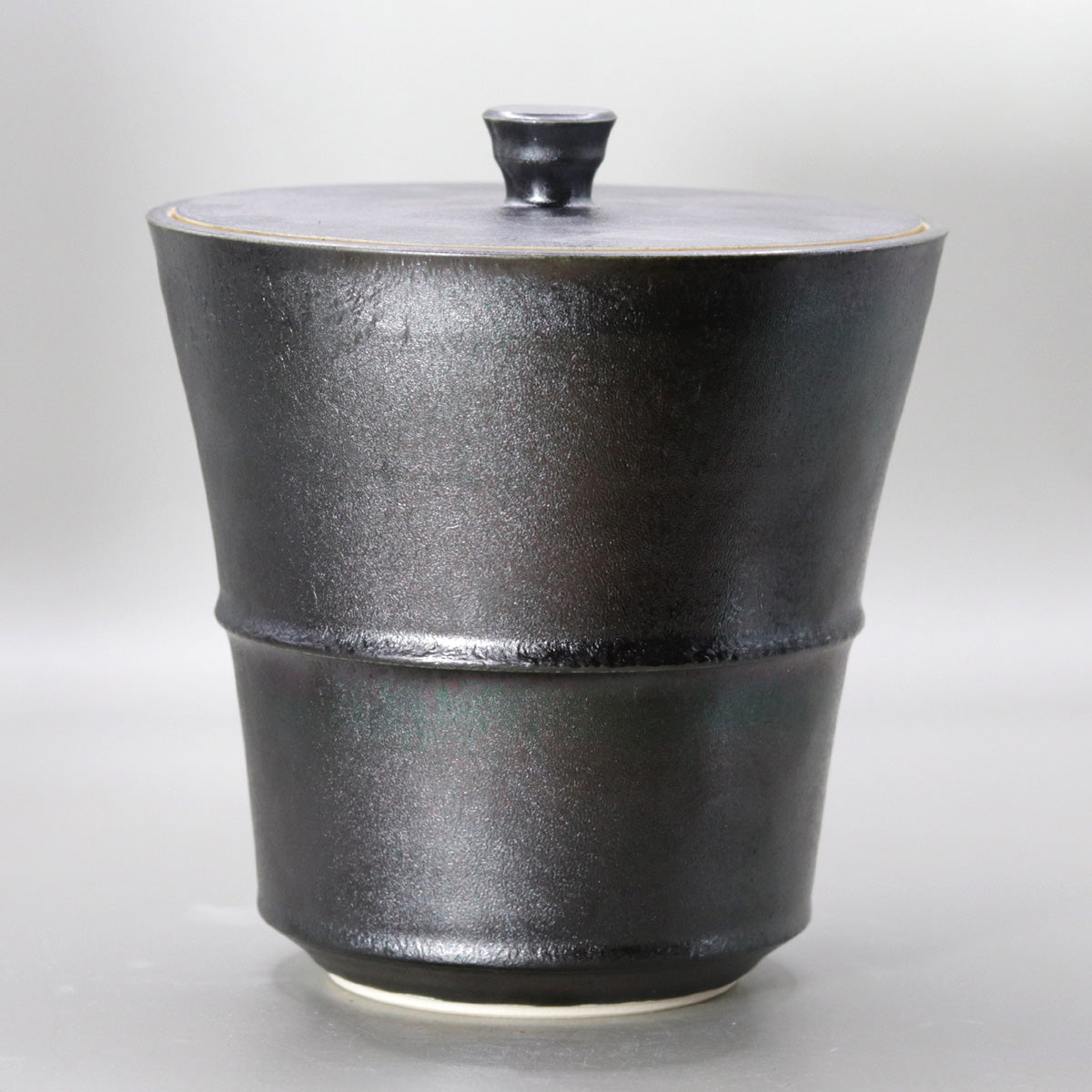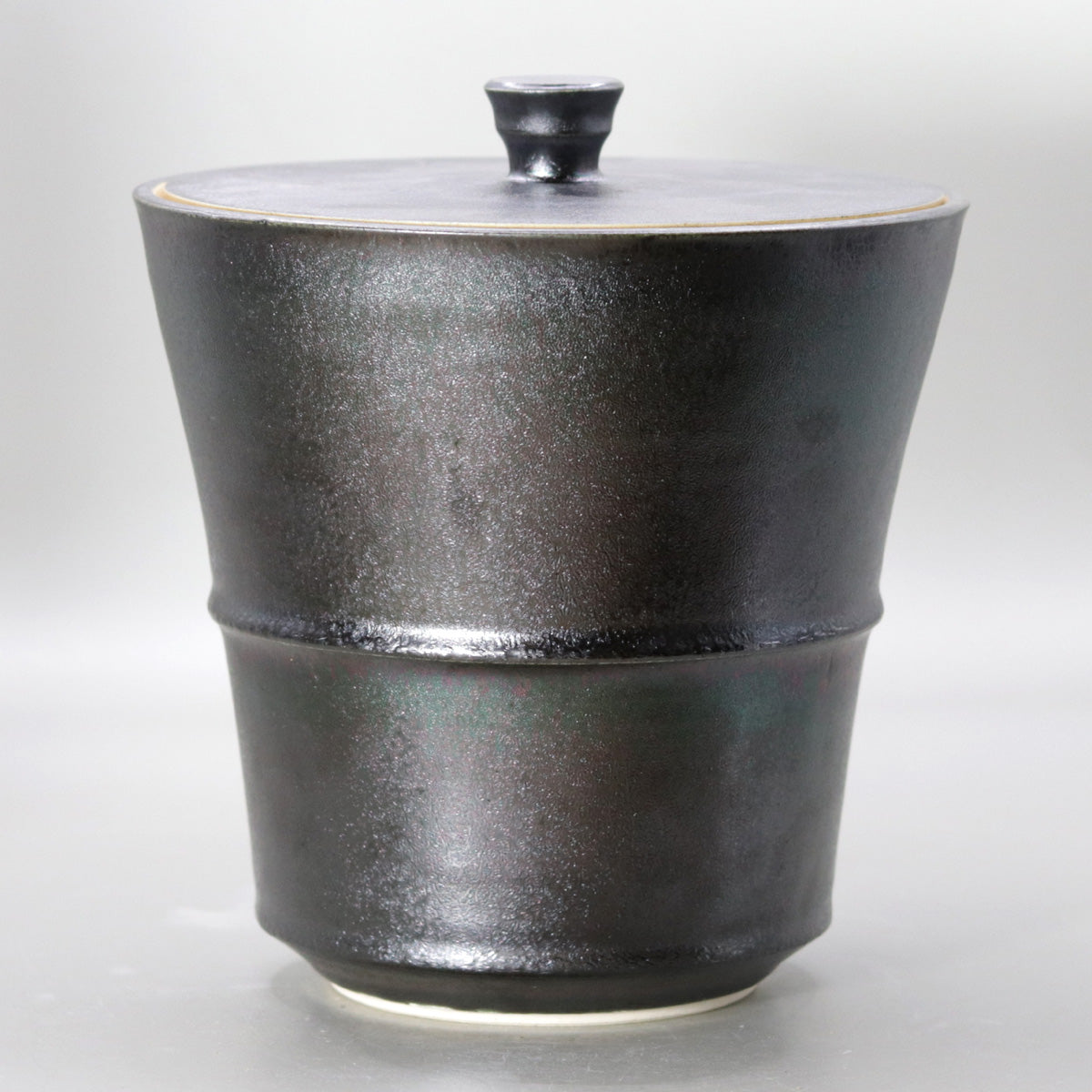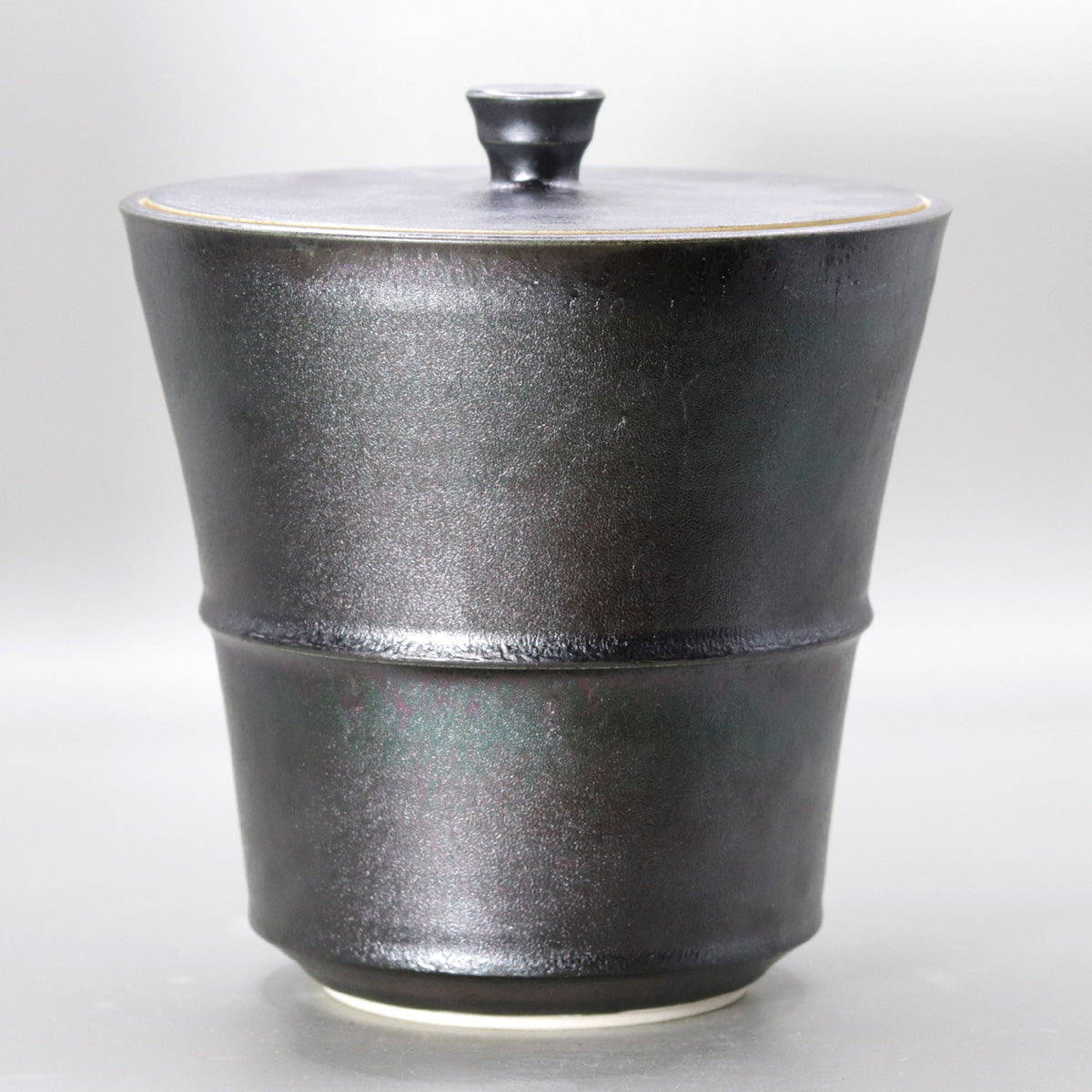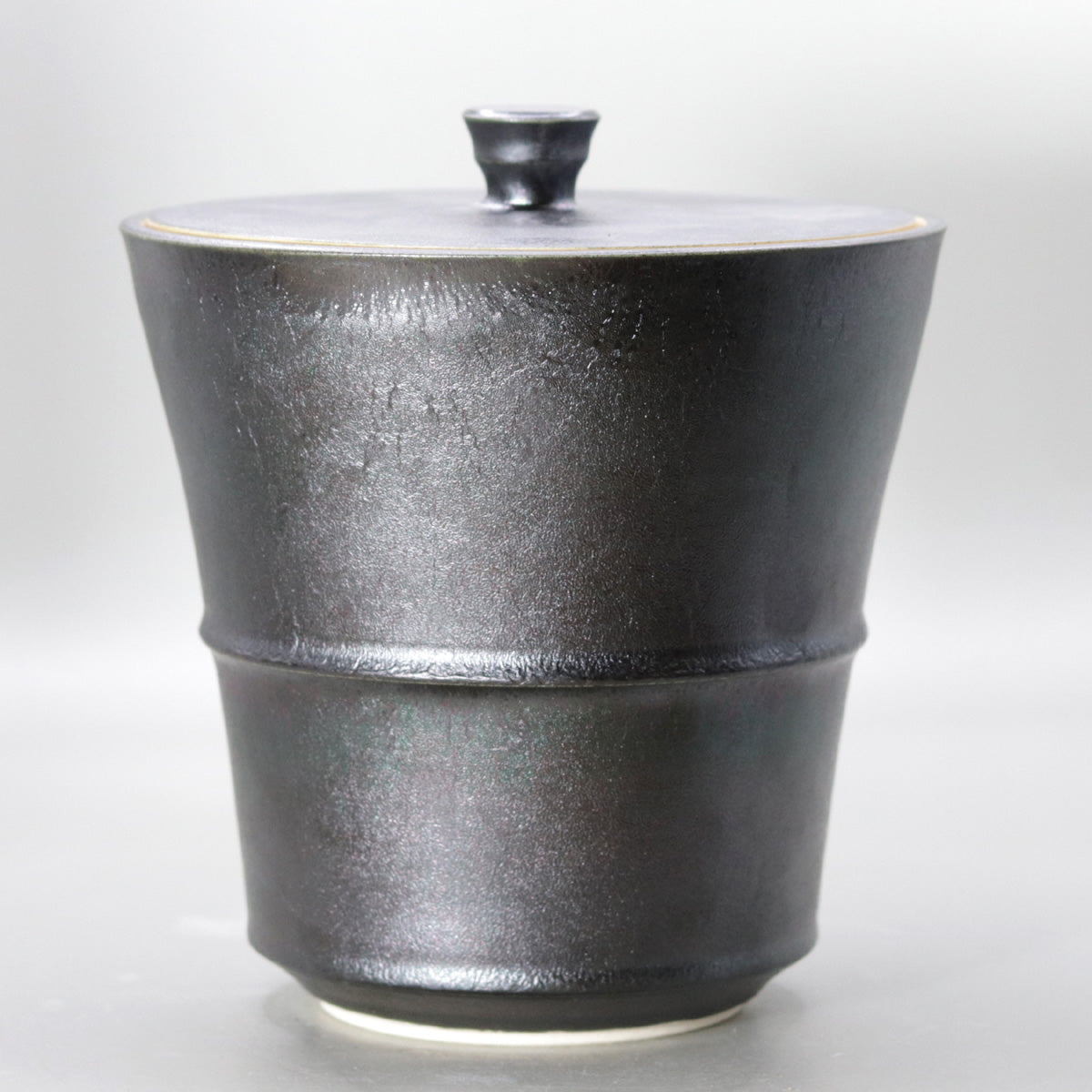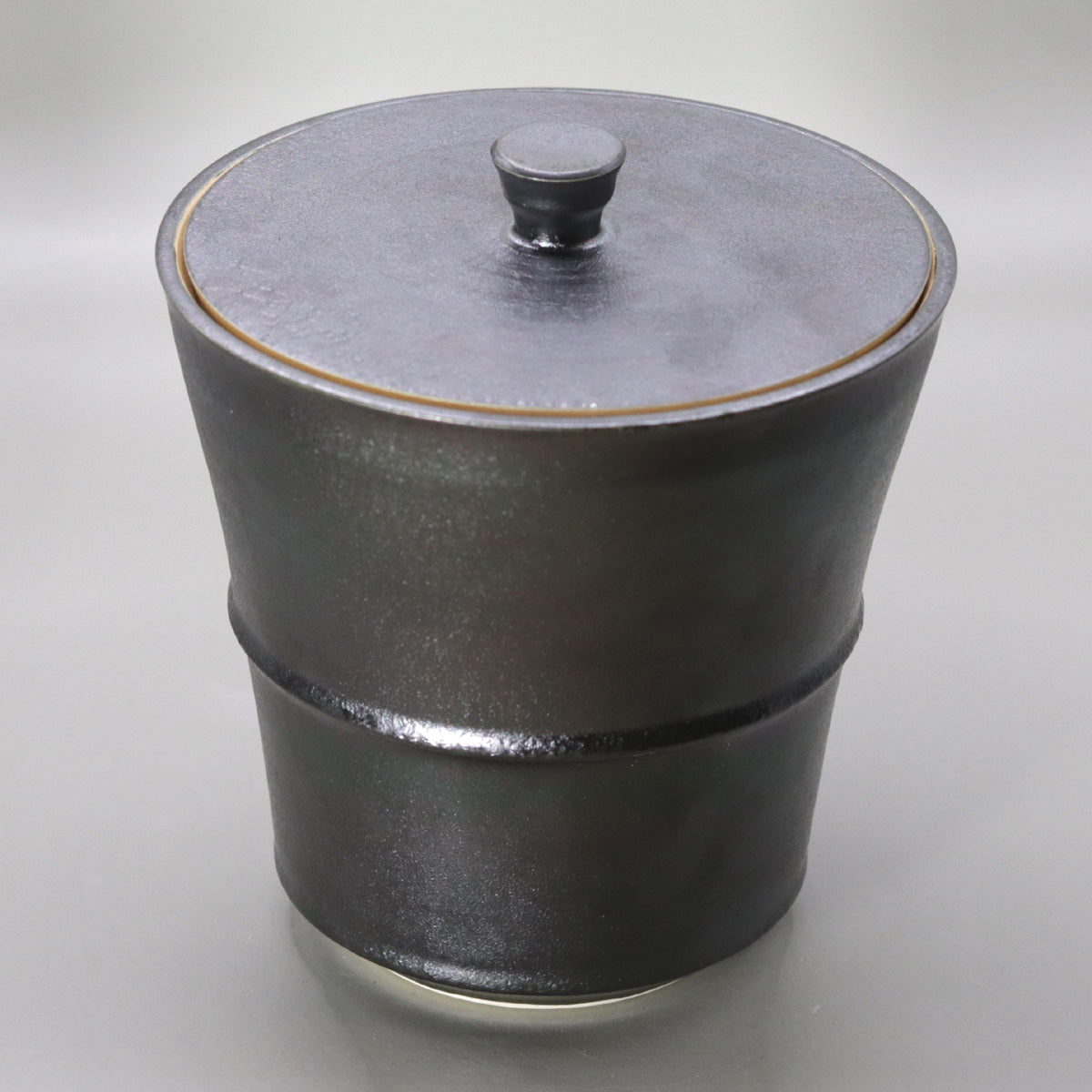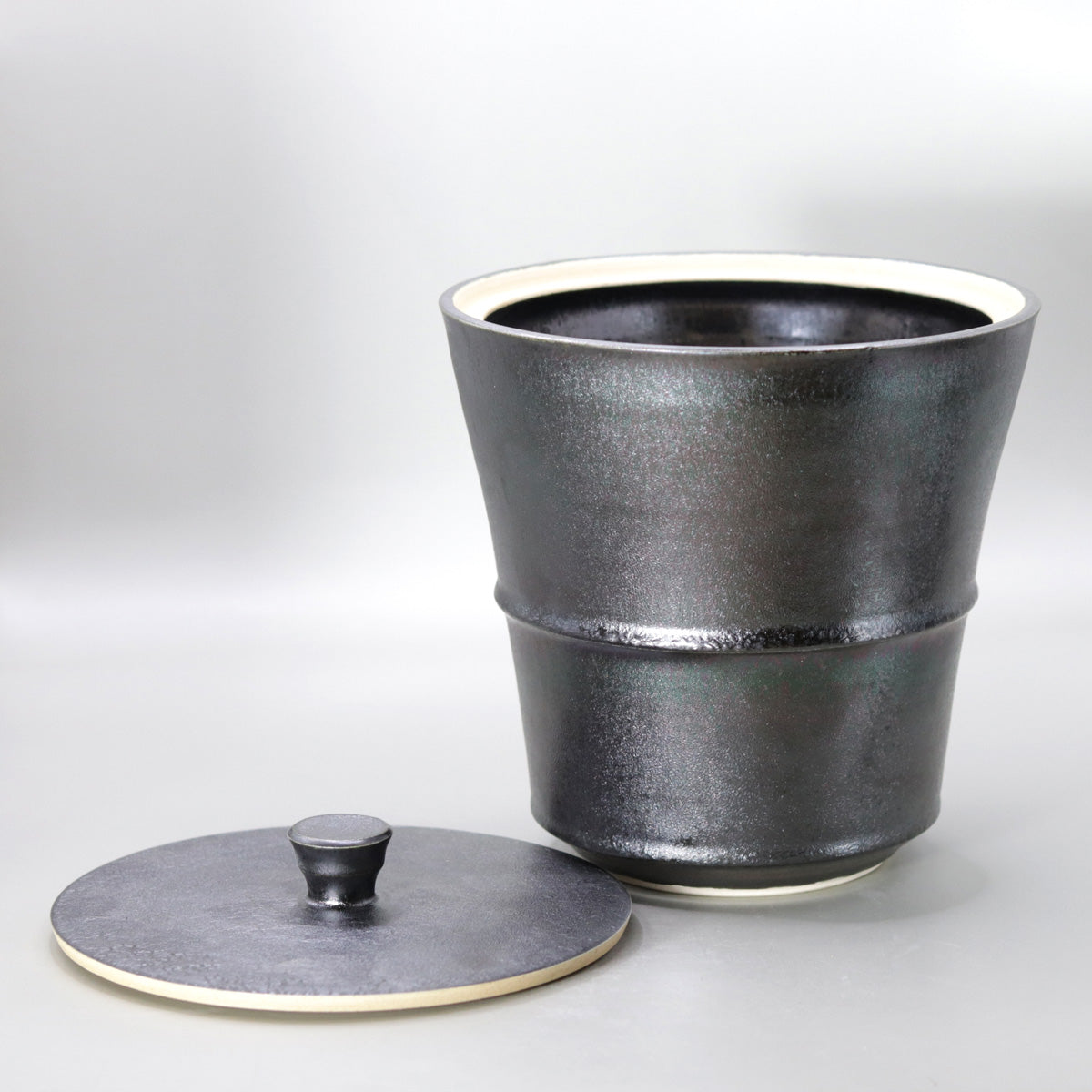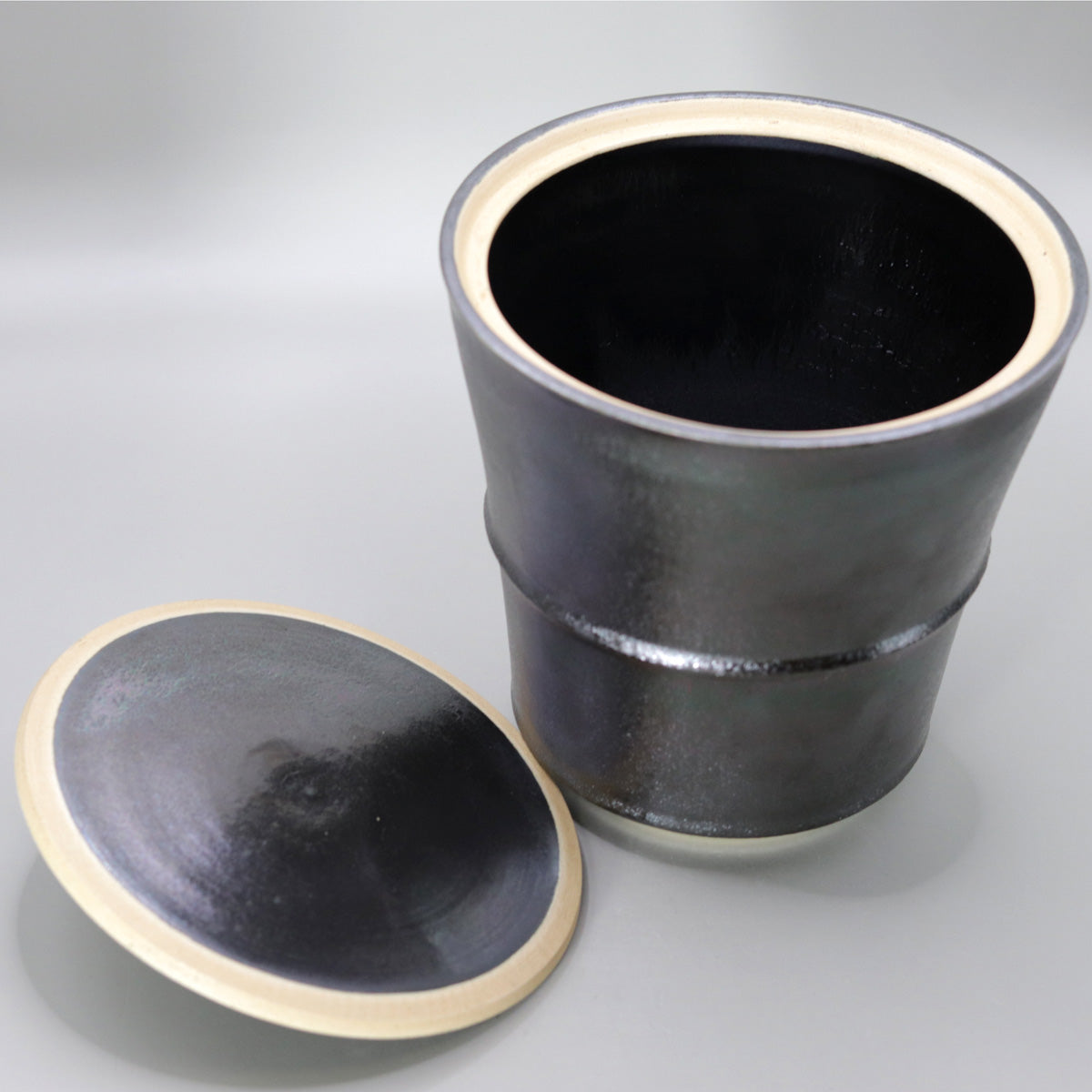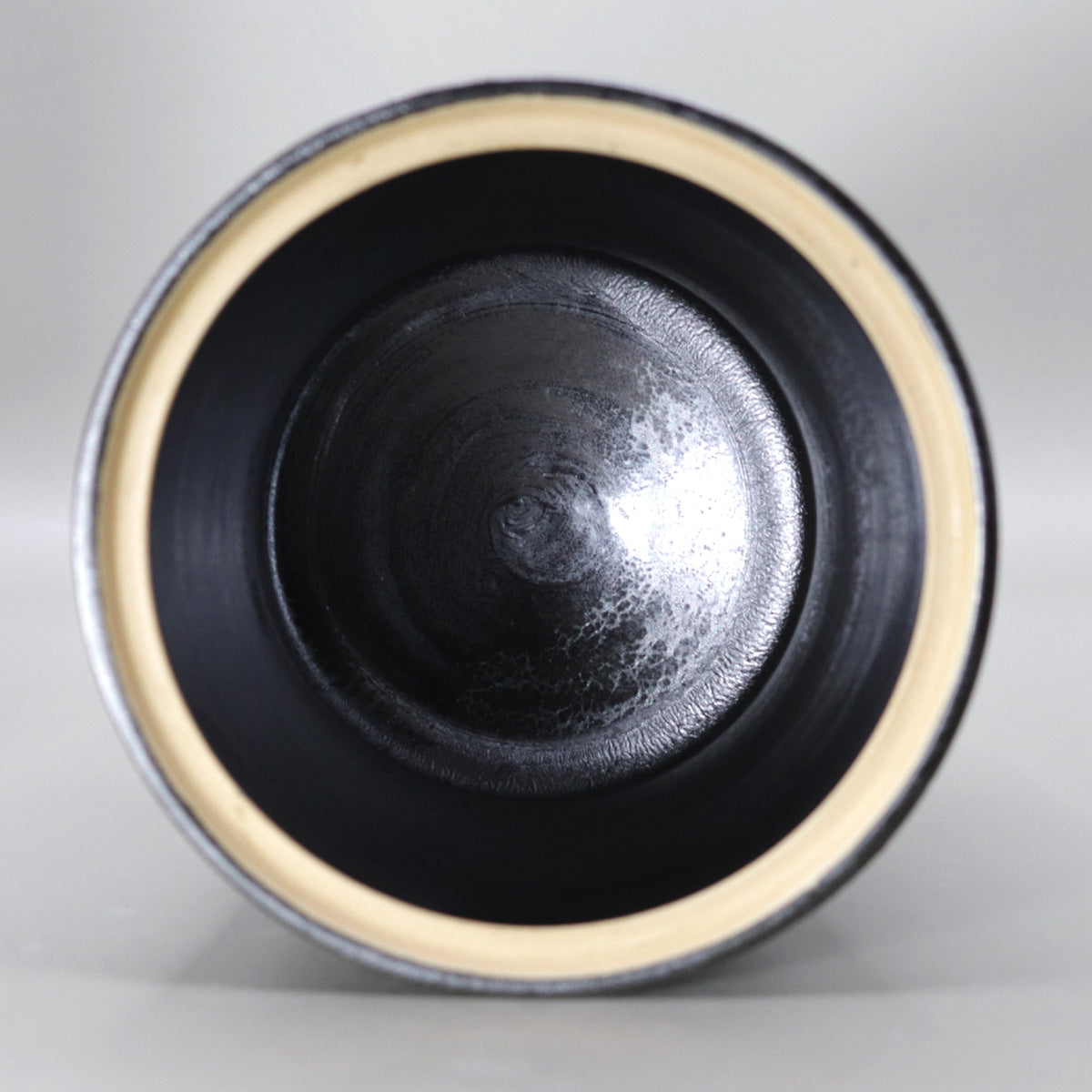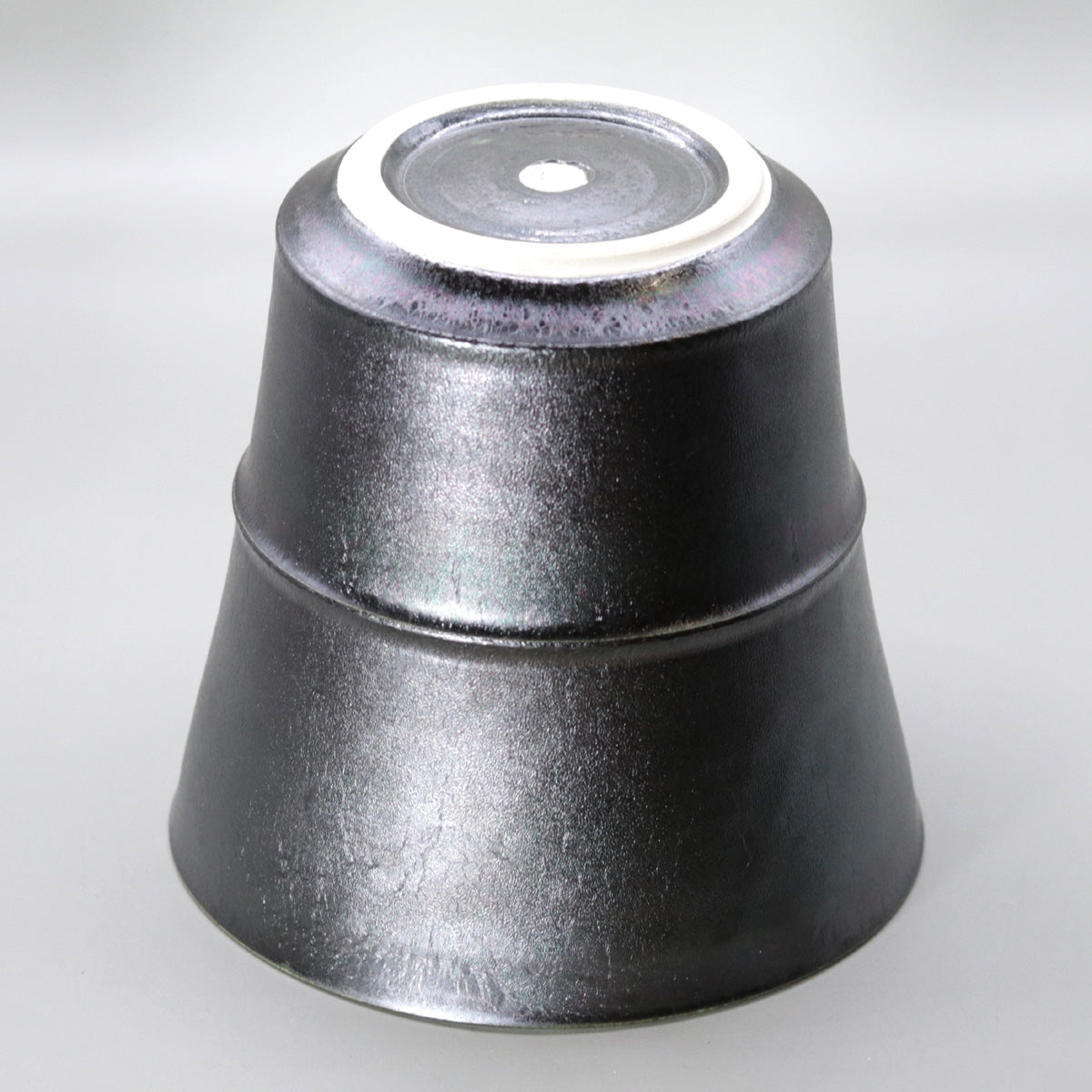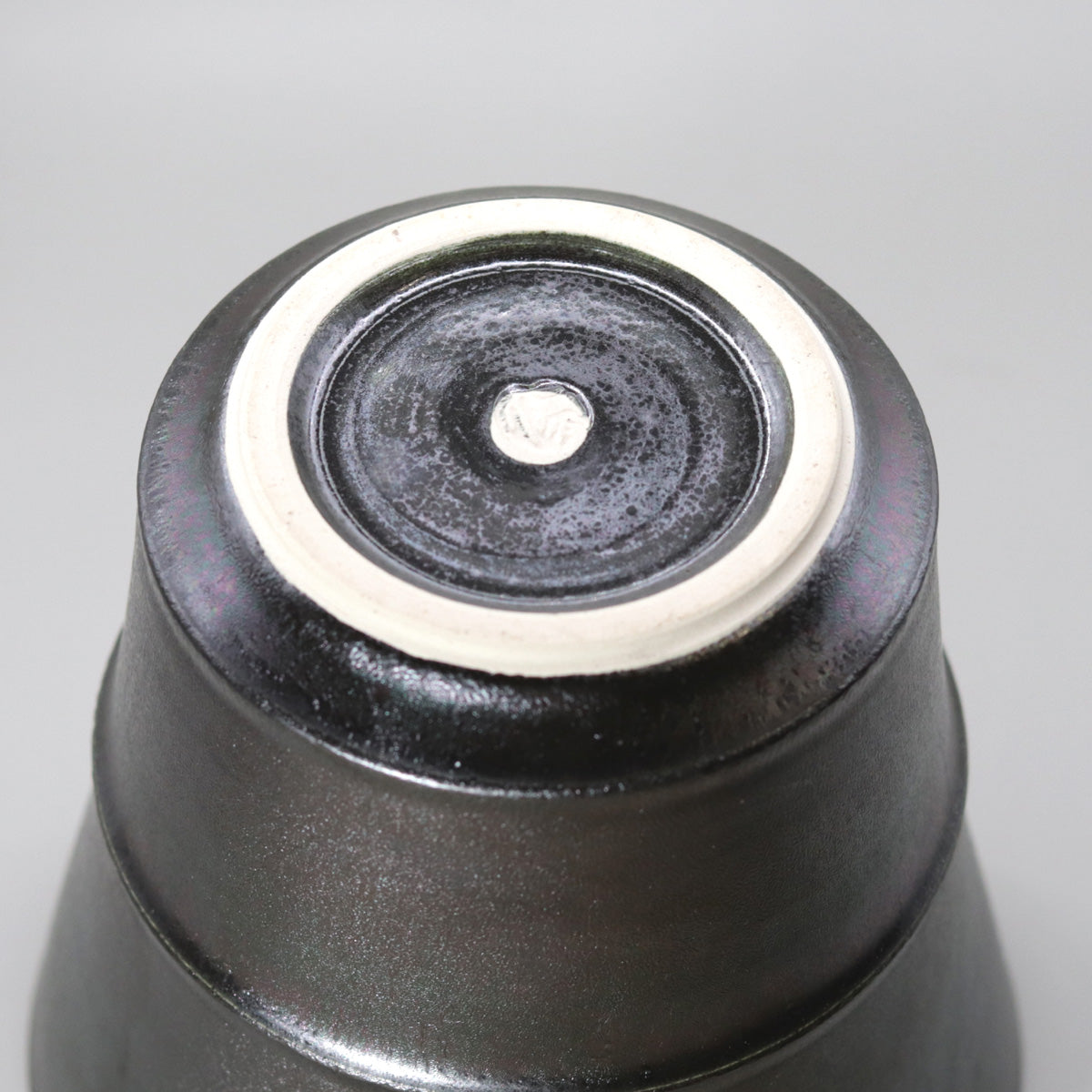Iron glaze kiln-transformed water jar by Okada Yu
Iron glaze kiln-transformed water jar by Okada Yu
Couldn't load pickup availability
Width: 16.0cm Height: 17.4cm
Iron Glazed Kiln-Changed Water Jar by Okada Masaru - "The faint light of the jade hidden in the deep black silence and the rhythm of the bamboo joints resonate in the tea ceremony."
Ⅰ Mizujar, the “main player in moisture”
Mizujars are used to pour water into the tea kettle during the tea ceremony and to store water to rinse the tea bowls and tea whisks - they are the essential tools that control the moisture and tranquility of the tea ceremony. Those with a shared lid like this one, with the body and lid in the same design, can be used as the core of the tea ceremony tools regardless of the season. In particular, a pure black mizujar brings out the mysterious beauty of the kettle and tea bowls, bringing tension and tranquility to the entire tea ceremony.
II. Iron Glaze and Kiln Change - Infinite Colors Residing in the Depths of Black
2-1 The appeal of iron glaze
Glazes that contain a lot of iron produce a deep black color when fired at high temperatures, but also show slight hints of green, purple, or brown depending on the flame fluctuation and the degree of reduction. Okada Masaru adds a moment of oxidizing flame at the end of the reduction process, creating a mottled look of jade in the depths of the black base, creating a tranquil yet expressive texture.
2-2 The shadows and luster brought about by kiln changes
The horizontal ridge running down the center of the body is reminiscent of a bamboo joint, and a small amount of glaze has accumulated there, revealing a deep purple band. Under the light, the black is shaded and the pale verdigris flickers faintly, creating a fantastical scene reminiscent of moonlight shining into a bamboo forest at night.
III. Shape and Design: A neat silhouette that reflects the bamboo joints
The rim of this piece is slightly tapered inwards to quietly stabilize the lid and prevent rippling of the water. This makes it easier to insert the ladle, and even if the tip of the ladle touches the rim when pouring water into the kettle, the sound resonates softly, maintaining the silence of the tea ceremony.
The center of the body has ridges reminiscent of bamboo joints, dividing the body into two sections and giving the design a pleasant rhythm. These joints also act as excellent handles, providing stability when removing the pot from a shelf or hearth, and adding confidence to movements in front of guests.
The bottom is slightly tapered, which not only helps the water in the bottom to settle, but also increases stability by moving the center of gravity downwards. It also has the advantage of being less prone to shaking when moving it to another location, making it easy to handle while sitting.
The small, goblet-shaped handle of the lid fits comfortably in the fingers and blends in with the black glaze of the body, creating a sense of unity. Even if the lid is placed face down on a tatami mat without a lid rest, the view is not lost and the dignified appearance is maintained, making this an exceptional piece that adds elegance to the host's actions.
IV. Resonating with History: From Setoguro and Oribe-guro to the Present
During the Momoyama period, tea bowls in Setoguro and Oribe-kuro, which represent the bold aesthetic sense of the samurai class, rose to prominence as the strongest "supporting role" that accentuated the green of tea with its black glaze. The iron glaze kiln-changed water jar is a product that transfers the spirit of the black glaze to the water jar,
The deep black color tightens the tea ceremony, the fluctuation of the kiln firing creates an lingering feeling of wabi, and the bamboo joint design speaks of the samurai taste for wabi-suki and the praise of nature at the same time. Okada Masaru has reflected in his mind the scenery of the bamboo forest in Sumiyama swaying in the morning mist, and by sinking the emerald color into the depths of the black glaze, he has brought to the vessel the image of "bamboo before dawn."
Ⅴ The Artist's Message: Containing the Landscape
Okada Masaru continues to create pottery that "captures the landscape in the form of vessels" in a place where the traditional techniques of Kiyomizu Gojozaka and the nature of Uji and Sumiyama intersect. In this water jar, the vertical rhythm of the bamboo forest is expressed with joint bands rather than vertical ridges, the faint emerald color of the moonlight is hidden by reduction kiln transformation , and the silence of the black glaze is pursued as if listening carefully to a quiet night. Just by placing it at a tea ceremony, the scent of bamboo and the hint of the night breeze rise up faintly, gently opening the five senses of the guest.
This iron-glazed kiln-transformed water jar is filled with the rhythm of bamboo joints and has a deep black silence. When you stroke it with your palm, the fine unevenness feels good on your fingertips, and the bands of the joints provide a sure clue. It will add the mysterious beauty of a bamboo forest at night and the faint light of the jewels to the "once in a lifetime" experience of the tea ceremony, and deliver a rich story in the silence.
Share










Multi-Column
-
[I will send it to you quickly and carefully]
We carefully package each product in a way that suits it best.
Also, delivery times vary depending on the piece (vessel, etc.).
Items that already come with a box will be shipped within 1-3 days of the order date.
For items that require a box to be made after your order, it will take approximately 30 days for production to be completed and then shipped.
In either case, once we have confirmed your order, we will contact you by email to inform you of the delivery date.
-
[Requests when purchasing pottery]
Even products that look the same may differ slightly in color, shape, size, etc.
The way the glaze is used, the power of the kiln, the firing method, the season, and the humidity also affect the appearance of the pottery.
Please understand the individuality of each piece of pottery and enjoy the unique warmth of handmade.

